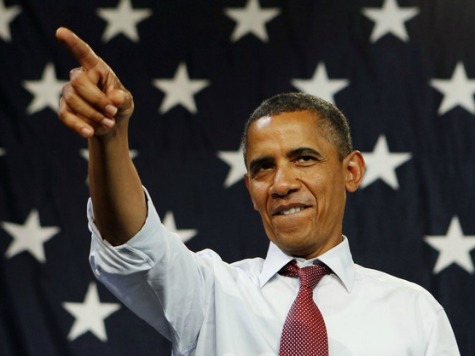
On the stump, President Barack Obama often insinuated to black voters that Republicans would take them back to the pre-Civil Rights era of Jim Crow, but his economy has wiped out nearly all the gains the black middle class has made since integration.
A record number of black voters went to the polls in 2008 and 2012 for President Barack Obama, but his economic policies — on top of the housing bubble that burst due to reckless subprime mortgages before the Great Recession — have decimated the black middle class, wiping out nearly 30 years of gains.
According to the Economic Policy Institute, “black households had a median net wealth of just $4,900 in 2010, compared with $97,000 for white households,” and a “a third of black households had zero or negative wealth.”
Since blacks have not been able to accumulate “generations of wealth,” home values account for nearly 60% of an average black family’s wealth.
The American Prospect found that while most “middle-class families hold all of their wealth in their homes,” this is “especially true for the median black family” because many families do not own any stocks.
“That means the housing crisis has wiped out an entire generation of black wealth,” The Prospect wrote. This is made tougher because there is “no family wealth to fall back on in hard times” because “wealth is not very deep” in minority communities.
According to the Prospect, while black homeownership steadily rose since 1995, reaching a height of 49% in 2005, the Great Recession caused black homeownership rates to fall — and black families living in the D.C. suburbs have been hit the hardest.
The Prospect profiled Prince George’s County in Maryland as being emblematic of the rise and fall of the black middle class. In that county, foreclosure rates “were 4.19 percent, compared to 1.87 percent in Maryland and 2.21 percent in the nation as a whole.”
In 1999, after President Bill Clinton signed the Gramm-Leach-Bliley Act, which “allowed lending banks and investment banks to operate under one roof,” predatory lenders targeted areas like Prince George’s County, which had a lot of minorities.
Those who have studied the matter told the Prospect that people in Prince George’s County “were prime targets,” and “networks of brokers and others” were “targeting communities and working through churches and doing other kinds of things to find the kind of people they could put into these mortgages.”
According to reports, “African-American borrowers with good credit scores received subprime, predatory loans associated with high foreclosure rates three times as often as white borrowers with comparable credit scores.”
And earlier this year, the Woodstock Institute, which researches fair lending issues, “found that although 25 percent of homes in the Chicago area were underwater, about 40 percent of homes in predominantly black neighborhoods were.” In addition, “the average equity for mortgaged properties in communities that are more than 90 percent white is about $108,000. In communities that are 80 percent or more black, the average is $6,800.”
While the families that were hit hardest “were those who bought at the height of the 2000 housing boom and lost their incomes during the Great Recession that followed,” the general decline in home prices across the board impacted nearly everyone black middle class homeowner.
Today in Prince George’s County, “the typical client has a mortgage of $300,000, and their house is worth $150,000.”
As the Prospect described, “the story of Prince George’s County is, in many ways, the economic history of black Americans writ large”:
Prince George’s County became emblematic of a long-delayed advance toward equality: the growth of black wealth in America. For three centuries, structural racism had prevented black families from building wealth. School systems, hiring practices, red-lining, and discriminatory lending practices all combined to deny the opportunities that white Americans, whether immigrant or native born, saw as their birthright. In the South, especially, there were more direct means of holding back black economic advancement: Violence was often directed toward black men and women who owned businesses or farms and toward those who fought for their right to work for fair wages.
The county today is described as “a collection of cities, small towns, and bedroom communities with a population of about 870,000” and “a median income of $71,260,” which is greater than the Maryland’s average.
In 1990, Prince George’s County became majority black for the first time since slavery “because black professionals were mostly displacing rural and working-class whites.” It also became the “wealthiest majority-black county in the nation” as “most of the professionals who bought homes in Prince George’s County came from Washington’s black middle class.”
According to the Prospect, laws “that expanded minority homeownership, combined with a booming mortgage market, brought more and more black residents out to the suburbs” as blacks made up 65% of the county’s population in 2010, up from 14% in the 1970s. In addition the county was one of the few “that grew wealthier as it became blacker” as “median income in Prince George’s outpaced the national median from the 1970 census forward.”
But when the house of cards that was the housing market collapsed, many in the black middle class were left living paycheck to paycheck. This is an issue Obama has rarely discussed or addressed because his economy has made it nearly impossible for those in the black middle class to rebuild their wealth let alone tread water.

COMMENTS
Please let us know if you're having issues with commenting.